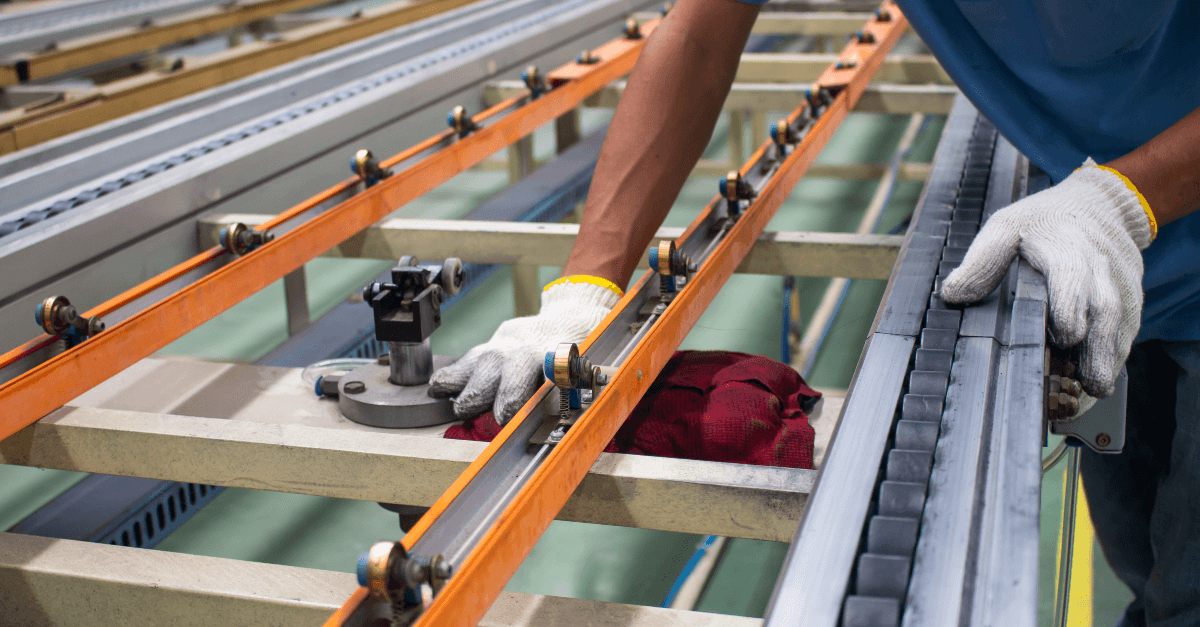How To Build an Effective Maintenance Technician Team
Your company invests multiple billions of dollars in automation machinery — miles of conveyor belts, intricately interlaced pneumatics, diverters, sorters, and stampers — to boost productivity and responsiveness. You hire a crack squad to install it properly, an additional nine-figure investment.
...then it breaks.
Is your on-site maintenance team up to the task of restoring production? You’re about to find out.
For manufacturing, warehousing, logistics, and distribution employers, assembling a top-flight maintenance team is much more “buyer beware” than “mission impossible.” We spoke with Aerotek Project Manager Michael Stollsteimer to gain insight into how and why to build the best maintenance team.
Screening and Hiring Strategies for Maintenance Technicians
Even though they’re in high demand, talented maintenance candidates are more abundantly available on the job market than many other skilled trades. The difficulty employers face is finding the right candidates and putting them in a position to succeed before there’s a production breakdown. Screening is crucial.
The first key is to review the resume and get the full story of where they’ve come from. Military veterans often have tech training, and even if not, the culture of the armed forces is very rooted in moving up and following a chain of command. That plays well for the kind of ambition you want at all levels of your maintenance technician team.
“I like to look at people who have been through technical schools, especially aviation — that work has dried up, so many are available now. If you can work on a jet engine, you can work on a conveyor belt mechanism,” says Stollsteimer.
The first job after technical school is a big one. It shows you what the candidate learned that wasn’t taught in school. Then, look at how many jobs they’ve had in the interim. If they’ve had a bunch, that’s not a great sign. It means they’ve had little time to ramp up a knowledge base. Stollsteimer also recommends Ramsey Exams as a screening mechanism to assess their problem-solving abilities.
And keep an eye out for education, even if it’s unfinished. “You look around the country, you’ll see mechatronics bachelors springing up. Even if you didn’t finish, those are a huge boost to a resume,” says Stollsteimer.
How to Structure Your Maintenance Technician Team with a Tiered Approach
While it’s certainly possible to assemble a smaller maintenance crew composed exclusively of upper-echelon leaders, or one made up of many practitioners with relatively little experience, the best approach is to layer levels of expertise in a way that fits your company’s needs.
When building a crew, high-level talent is crucial, but it's also essential to have mid-level workers and less experienced laborers to manage costs effectively. Otherwise, maintenance can easily become an afterthought.
It’s crucial for each team member to understand their balance point between technical ability, leadership, and apprenticeship. A good team must have hungry entry-level workers, managers and experts who can answer questions.
High-level career maintenance technicians are harder to find, and it’s even more difficult to find candidates with leadership skills. Many high-level employees are reluctant to share information and nurture people, as they’re in high demand. You must seek out people willing to do that, and it’s good to evaluate that drive to be a leader throughout the team.

Career Development and Training for Maintenance Technician Jobs
When building a maintenance technician team, employers need to shore up their training and development programs. This is the key differentiator that top maintenance talent cares most about and represents a major competitive advantage in talent attraction and retention.
At all three levels, employees have concerns about transparency regarding the mentoring process for their next role. People shouldn’t have to wonder or ask how their career progresses — there should be a roadmap. It should be easy for someone to learn how to get from tech 1 to tech 3.
Training is essential. You can expect degrees and certifications for incoming people, but training is an ongoing process. It needs a structure and documentation.
“They’ll stay if they believe in the program,” says Stollsteimer.
This transparency extends to safety as well. These people work with serious machines. That transparency is an existential question for the workers — if they can trust leaders to train them, they can trust them to ensure their safety.
A talented and motivated maintenance technician team can add enormous value to capital investments in automation. Assembling the best possible team means finding the ideal balance point of expertise and experience, screening for the right blend of hard and soft skills and understanding how the local job market meshes with ramps and production cycles.
FAQ: Building a Maintenance Technician Team
1. What does a maintenance technician do?
A maintenance technician installs, repairs, and maintains machinery and equipment. Their work ensures production runs smoothly and safely.
2. Why is hiring maintenance technicians challenging?
Demand for skilled trades is high, and qualified maintenance technicians are in short supply. Employers must use effective screening and hiring strategies to find the right talent.
3. How can companies build an effective maintenance technician team?
Employers should adopt a tiered approach, structured around entry-level workers, mid-level technicians, and senior leaders. This balance helps control costs and strengthens knowledge sharing.
4. What training supports maintenance technician jobs?
Strong development programs, ongoing training, and clear career paths are key. Maintenance technicians value transparency in advancement and safety practices.
5. How does Aerotek help with maintenance technician hiring?
Aerotek connects employers with qualified maintenance technicians, offering workforce solutions that improve productivity, reduce downtime, and support long-term success.
